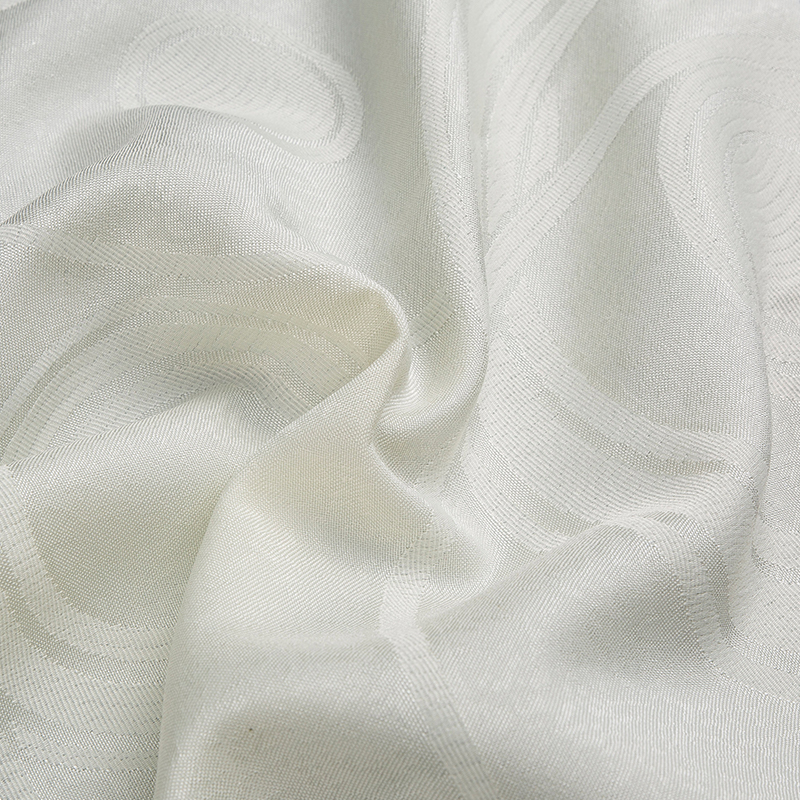Premium quality since 2002!
Curtains are more than just decorative elements; they play a crucial role in controlling light, providing privacy, and enhancing a room's insulation and aesthetic. The fabric you choose is paramount to achieving these goals.
Factors to Consider When Selecting Curtain Fabric
Before diving into specific fabric types, consider these key factors:
-
Light Control: Do you need to block out all light (e.g., for a bedroom) or simply diffuse it (e.g., for a living room)?
-
Privacy: How much privacy do you require from outside views?
-
Insulation: Do you need to help regulate room temperature, keeping heat in during winter and out during summer?
-
Durability: How much wear and tear will the curtains experience? Are they in a high-traffic area or exposed to direct sunlight?
-
Maintenance: How easy is the fabric to clean and care for?
-
Aesthetics and Style: Does the fabric complement your existing décor and the overall style of the room?
-
Cost: Fabric prices can vary significantly.
Popular Curtain Fabric Types and Their Benefits
Here's a detailed look at some of the best fabric options for curtains:
1. Cotton
Cotton is a versatile and widely popular choice for curtains due to its natural fibers and breathability.
-
Pros: It's lightweight, drapes well, and comes in a vast array of colors, patterns, and weaves. Cotton is also relatively easy to clean and can create a crisp, clean look. It's excellent for diffusing light and offering moderate privacy. Organic cotton options are also available for an eco-friendly choice.
-
Cons: Can be prone to wrinkling and may fade over time if exposed to direct sunlight. Without a proper lining, it offers limited insulation and light blockage.
-
Best for: Living rooms, dining rooms, kitchens, or any space where a casual, airy, or traditional look is desired.
2. Linen
Similar to cotton, linen is another natural fiber known for its distinctive texture and relaxed elegance.
-
Pros: Offers a beautiful, casual drape and a slightly textured appearance. It's highly breathable and durable. Linen curtains can create a sophisticated yet relaxed atmosphere, allowing soft light to filter through.
-
Cons: Tends to wrinkle easily and can be more expensive than cotton. It also offers limited insulation without a lining.
-
Best for: Bohemian, rustic, or casually elegant interiors, especially in living rooms or dining areas where a light, airy feel is desired.
3. Silk
Silk curtains exude luxury and sophistication, instantly elevating the grandeur of a room.
-
Pros: Known for its beautiful sheen, soft feel, and excellent draping qualities. Silk adds an opulent touch and can make a strong style statement. It's naturally hypoallergenic.
-
Cons: Very delicate and susceptible to sun damage (fading and deterioration). Requires professional dry cleaning and can be quite expensive. It also offers poor insulation on its own.
-
Best for: Formal living rooms, master bedrooms, or dining rooms where a lavish and elegant aesthetic is paramount. Always use a good lining to protect the fabric.
4. Velvet
For warmth, opulence, and excellent light blocking, velvet is an unbeatable choice.
-
Pros: Rich, plush, and luxurious. Velvet offers superior light blocking and excellent thermal insulation, making it ideal for colder climates or bedrooms. It also provides fantastic sound absorption, enhancing room acoustics.
-
Cons: Heavy and can be expensive. Requires professional cleaning and can attract dust.
-
Best for: Bedrooms, home theaters, formal dining rooms, or any space where a dramatic, cozy, and insulated environment is desired.
5. Blackout Fabrics
These fabrics are specifically engineered to block out light, often made from tightly woven synthetics or with a special coating.
-
Pros: Provide maximum light blockage, privacy, and significantly improve thermal insulation, leading to energy savings. They are excellent for promoting sleep.
-
Cons: Can be stiff and lack the drape of more natural fabrics. The aesthetic may be purely functional unless combined with another decorative fabric.
-
Best for: Bedrooms (especially for shift workers or those sensitive to light), nurseries, and media rooms.
6. Sheer Fabrics (Voile, Lace, Organza)
Sheer fabrics are designed to let light in while offering a degree of privacy.
-
Pros: Create an airy, ethereal ambiance. They soften harsh sunlight, offer daytime privacy, and can be layered with heavier drapes for more versatility.
-
Cons: Offer minimal light blockage, insulation, or nighttime privacy.
-
Best for: Living rooms, dining rooms, or any space where you want to maintain brightness while adding a touch of elegance and diffusing harsh light. Often used as an under-layer.
7. Synthetic Blends (Polyester, Rayon, Acrylic)
Many curtain fabrics are made from synthetic fibers or blends that combine the best qualities of different materials.
-
Pros: Generally durable, wrinkle-resistant, fade-resistant, and less expensive than natural fibers. They are also easy to clean and maintain. Polyester is particularly good for resisting moisture and mildew.
-
Cons: May not have the same luxurious feel or natural drape as some natural fibers. Can sometimes look less "high-end."
-
Best for: High-traffic areas, children's rooms, kitchens, or any space where durability, ease of care, and affordability are priorities.
The Importance of Lining
Regardless of the primary fabric you choose, lining can significantly enhance your curtains' performance.
-
Standard Lining: Adds fullness, protects the main fabric from sun damage, and provides some insulation and privacy.
-
Thermal Lining: Offers superior insulation, helping to keep rooms warmer in winter and cooler in summer, leading to energy savings.
-
Blackout Lining: Provides maximum light blockage and privacy, ideal for bedrooms.
By carefully considering your needs regarding light control, privacy, insulation, and aesthetic preferences, you can select the perfect fabric to create curtains that are both functional and beautiful, truly transforming your space.


 English
English 简体中文
简体中文









